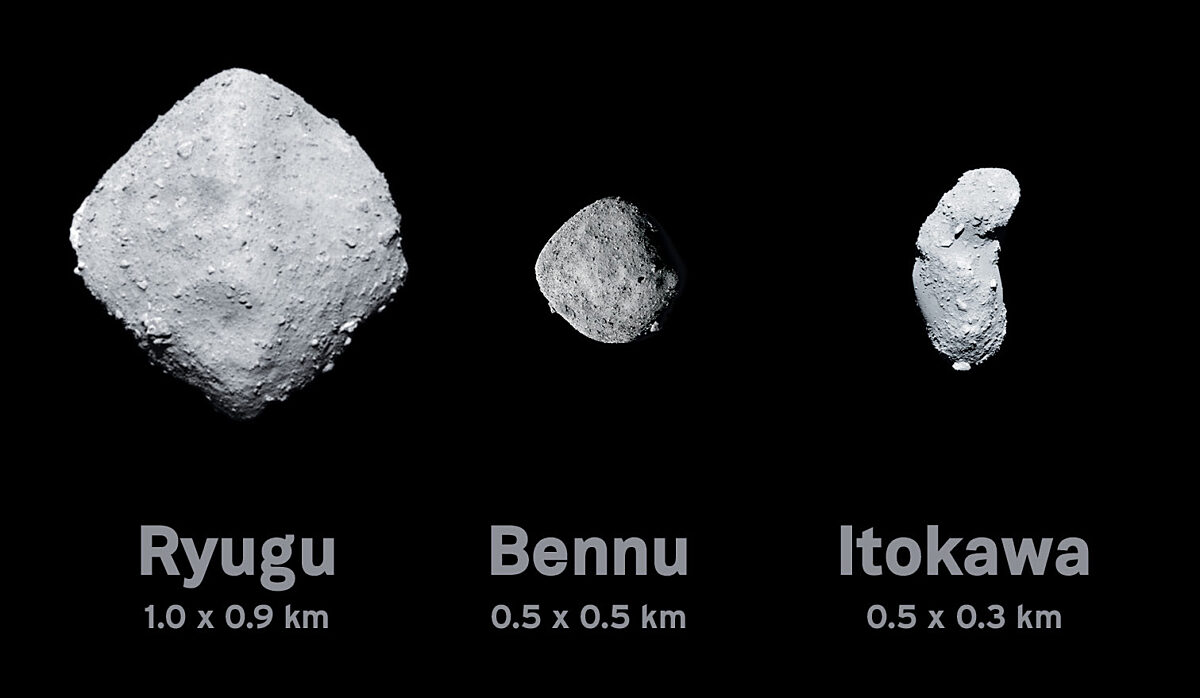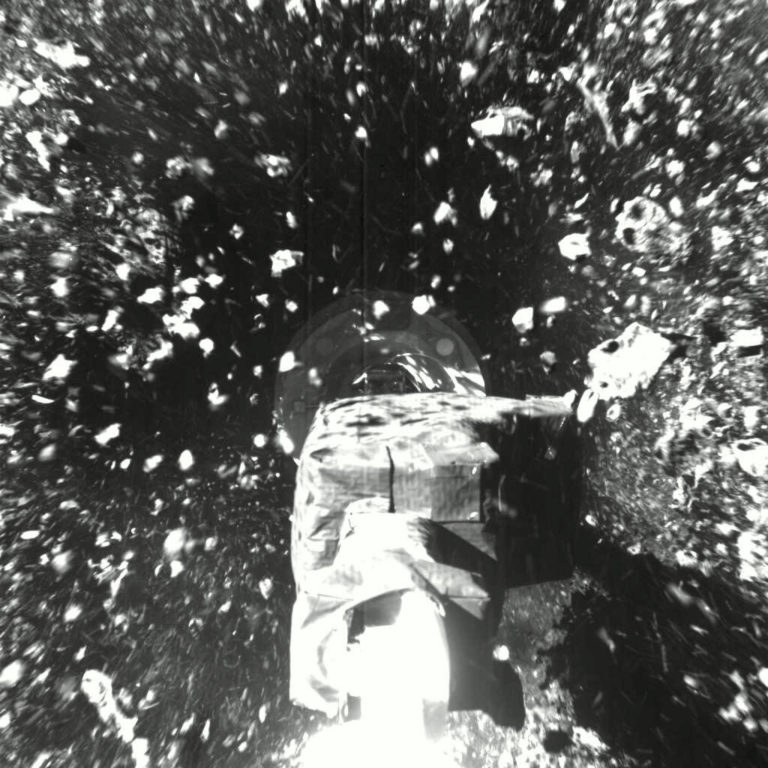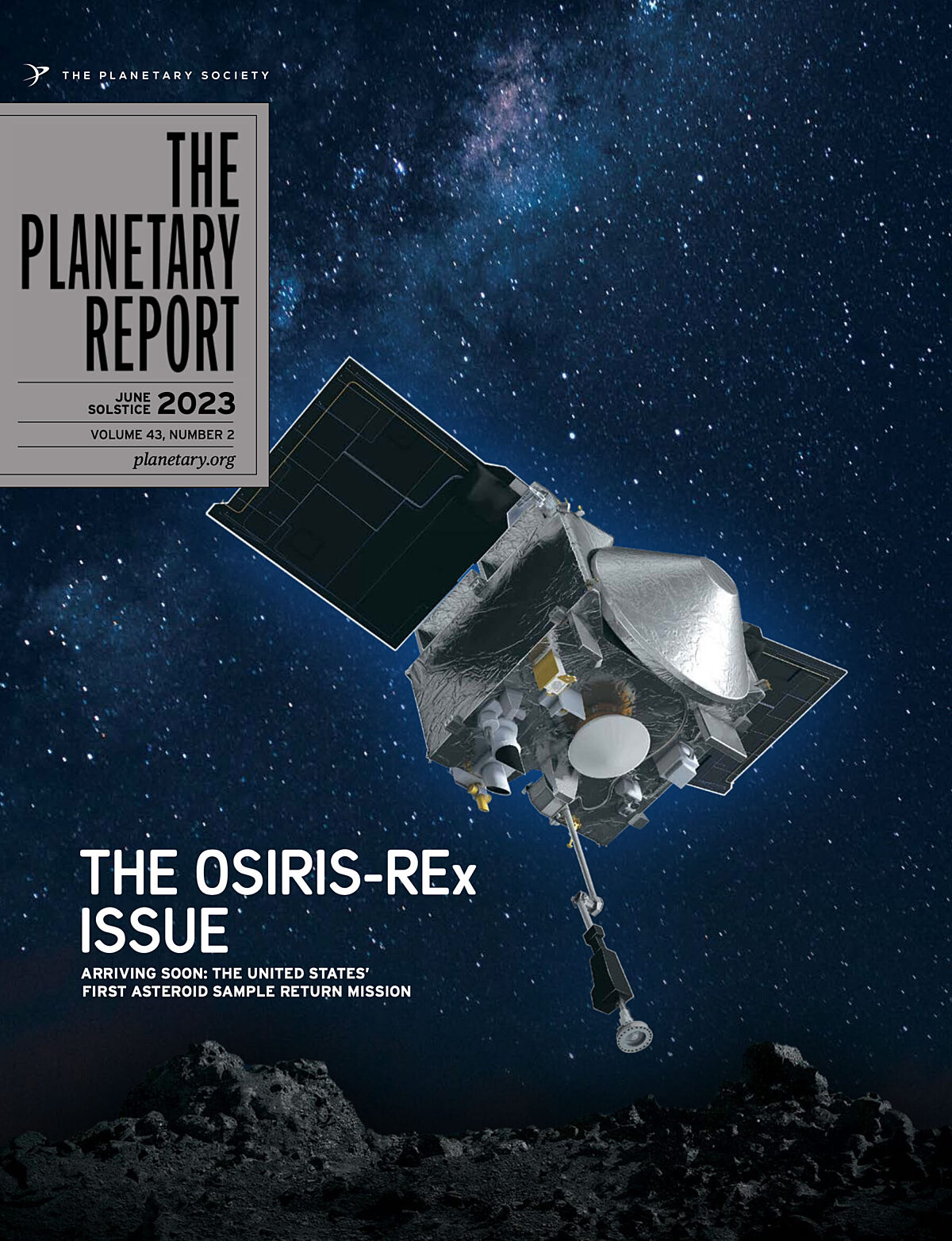Why did we need OSIRIS-REx?
As you'll read in this issue, NASA’s OSIRIS-REx spacecraft is on its way back to Earth to drop off a sample of asteroid Bennu after a 7.1 billion-kilometer (4.4 billion-mile) round trip. Since JAXA’s Hayabusa and Hayabusa2 missions have already visited the asteroids Itokawa and Ryugu, respectively, why did we need another asteroid sample return mission? For many planetary exploration enthusiasts, the “why” might not seem so important — the more missions, the merrier! But there are indeed some very good reasons why OSIRIS-REx’s seven-year mission was worthwhile.
First, some context: In 2003, the Japanese Aerospace Exploration Agency (JAXA) launched a mission called Hayabusa to study the asteroid Itokawa up close. This was the first mission to land on an asteroid and attempt to collect a sample, although the sample collection mechanism malfunctioned, and the spacecraft was only able to collect a small amount of asteroid dust. JAXA’s follow-up Hayabusa2 mission was more successful. It launched in 2014, arrived at the asteroid Ryugu in 2018, and returned samples to Earth in 2020.

The asteroids visited by the Hayabusa missions and OSIRIS-REx have a few things in common: all three are near-Earth, potentially hazardous, rubble-pile asteroids.
The near-Earth/potentially hazardous designations mean that Itokawa, Ryugu, and Bennu all have orbits around the Sun that bring them close enough to Earth to be considered a potential threat. Extensive observations have allowed us to calculate that two out of three of these asteroids are not on a collision course with Earth and that Bennu has a mere 1 in 1,800 chance of impacting our planet sometime between 2178 and 2290. Still, Itokawa, Ryugu, and Bennu are prime examples of the kind of asteroid that is most important to understand. The more we know about asteroids that come near Earth, the better prepared we will be to deflect one if it ever does come right at us.
The rubble-pile designation means that each asteroid isn’t an entirely solid object, instead consisting of chunks of rock bound together gravitationally. Rubble-pile asteroids are thought to form when the remains of a larger asteroid that was destroyed in a collision come back together to form a new asteroid but without enough mass to gravitationally cohere. Since planets, moons, and asteroids all have to start from much smaller collections of material, rubble-pile asteroids might shed insights on the early stages of planetary formation.

The key difference between Bennu and the targets of JAXA’s missions is that Bennu appears to be particularly ancient. Itokawa is thought to have formed from a collision between asteroids about 1.5 billion years ago. Ryugu’s surface is thought to be even younger, about 9 million years old. Bennu, on the other hand, is thought to have formed in the first 10 million years of the Solar System’s history, coasting through space undisturbed for over 4.5 billion years without undergoing any major composition-altering change.
This means that the surface material collected by OSIRIS-REx might be unchanged from the time of the asteroid’s formation. This makes it a kind of time capsule, preserving the conditions of the early Solar System and therefore early Earth. When scientists study the samples that OSIRIS-REx will return from Bennu, they expect to find some of the same molecules that were present when life first formed on Earth. Because the origins of life are still a bit of a mystery, any additional clues we can get about the conditions in which life formed could completely change our understanding of how we all got here.

OSIRIS-REx also used a different sample collection technique than the Hayabusa missions. While JAXA’s missions each fired a projectile into the asteroid's surface to create a crater and then collected samples of the ejected material, OSIRIS-REx performed what’s called a touch-and-go maneuver to collect a sample from Bennu’s surface, firing a burst of nitrogen gas to stir up the surface material and then making contact with that material using a sampling arm. This technique allowed OSIRIS-REx to collect a larger sample than the Hayabusa missions, meaning scientists on Earth will have more material to study.
In March 2023, studies of Hayabusa2’s samples from Ryugu found many of the building blocks of life, including one of the components of RNA. This only adds to the excitement about what we might discover in the samples OSIRIS-REx returns from Bennu. Together, these three sample return missions are adding to humanity’s under- standing of asteroids, our Solar System’s history, our own planet, and life itself. With such huge questions at stake, you can hardly have too many missions.
Support our core enterprises
Your support powers our mission to explore worlds, find life, and defend Earth. You make all the difference when you make a gift. Give today!
DonateThe Planetary Report • June Solstice
Help advance space science and exploration! Become a member of The Planetary Society and you'll receive the full PDF and print versions of The Planetary Report.


 Explore Worlds
Explore Worlds Find Life
Find Life Defend Earth
Defend Earth


